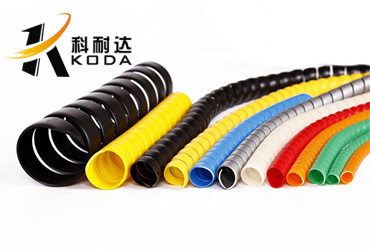Process of KODA Silicone Hoses
Making silicone hoses is a long and complicated process and here at KODA, we’re extremely proud of our production techniques. Our silicone hose manufacturing is split into several stages; milling, calendaring, cutting, tube rolling, building, taping, curing, demoulding, and trimming. A great level of care is taken at every stage to ensure that all our hoses are produced with no creases, overlaps or air traps. Our skilled builders have months of training and hand tape all our hoses so they only produce high quality hoses with smooth, glossy and even surface finishes.
Silicone hoses are used in a host of applications ranging from automotive, food processing, medical, industrial etc. The versatility of silicone rubber makes it suitable for use in numerous places.Silicone hoses are commonly used in intake systems, air coolers, etc. The manufacturing process requires the right skills, tools, materials and the proper time. Here is a detailed look at the manufacturing process of silicone hoses:
Phase 1: Making a Mandrel Device
A mandrel tool is a shaping device that is made of metal as well as is hollow. It is utilized to bend silicone rubber in the form and also size of the desired silicone tube. It is frequently utilized in many various other applications like blowing glass.
The first phase is to make mandrel tool(s) in the shape of the silicone hose(s). This is done by manipulating steel in the preferred shape of the tube. These tools are generally stored by suppliers in countless sizes and shapes. The dimensions are available on their internet site or item brochure.
Phase 2: Choosing the Raw Materials
The raw materials are chosen specifically for making silicone hoses. These include silicone rubber, color pigments and reinforcement fabrics. Hoses are multi-layered and reinforcement fabrics are used to give them strength.
Phase 3: Milling & Calendering
The silicone rubber compound and the color pigments are mixed together in a mill. This process is called ‘milling’. It takes around half an hour in the mill to produce a color pigmented silicone rubber compound.
The colored silicone rubber compound is placed into a calendaring machine. The machine presses the compound between rollers to make it into thin sheets. The calendaring machine then presses the flattened compound on to the reinforcement fabric. Now the material is ready to hand build the hoses.
Phase 4: Cutting & Rolling
The thin sheets are cut and piled to roll. The builders roll the thin sheets in tubes. It is necessary to maintain the correct thickness of the tubes. A finished tube needs to have the correct number of reinforcement plies. Now these tubes are ready to be used for building hoses.
The silicone tubes are carefully pushed on the mandrel tools to give the desired shape. Any air bubbles or joints are smoothed out. Silicone hoses that have extra joints or bends need extra care to push the tubes into shape.
Phase 5: Oven Curing, Air conditioning & Stripping
The silicone hose pipes are then healed in the stove and after that cooled down. This provides them the wanted shape. To eliminate them, they are removed from the mold and mildew in one swift motion and also place in the wash tube for cleaning. The hoses are then sent for cutting and also evaluation.
Phase 6: Trimming & Inspection
Before trimming the hose is marked where the edge has to be cut. The edges are then cut using a machine for fine edges. After trimming the silicone hoses are sent for quality inspection. Once they are approved they are ready for shipping to the client.
![]()







